With entertaining and interesting displays for both children and adults, the Houston Museum of Natural Science is one of the city’s top attractions and most well-liked museums. There is always something new for visitors to see every time they visit the museum thanks to the many permanent and temporary exhibits.
The Houston Museum of Natural Science (HMNS) is a natural history museum situated on the northern edge of Hermann Park in Houston, Texas, in the United States. It was founded in 1909 by an organization (Houston Museum and Scientific Society) with an aim of providing the people of Houston with an institution focusing on education and science. This museum is visited by more than 2 million people annually.
The museum complex consists of the main building with four floors of halls and displays dedicated to natural sciences, the Burke Baker Planetarium, the Cockrell Butterfly Center, and the Wortham Giant Screen Theatre (formerly known as the Wortham IMAX Theatre).
There is so much to see at the museum that you could easily schedule a weekend there, but here is a list of our top 20 things to see & do there!
Hours: Monday – Sunday: 9:00 am-5:00 pm
Ticket Prices: Adults $25 (ages 12 and up), Child $16 (ages 3-11), Free (Kids 2 and under) Click here for a complete list of museum information before visiting.
Free Thursdays: Every Thursday visitors can enjoy the permanent exhibits for Free! Save money and check Groupon or CityPass for discounts.
Location: 5555 Hermann Park Drive, Houston, TX 77030
Phone: 713-639-4629
Website: https://www.hmns.org/
Recommended Time: 2-3 hours
Parking: FREE parking is available, but get there early. If not, there is a parking garage nearby for $20.
1. The Cockrell Butterfly Center
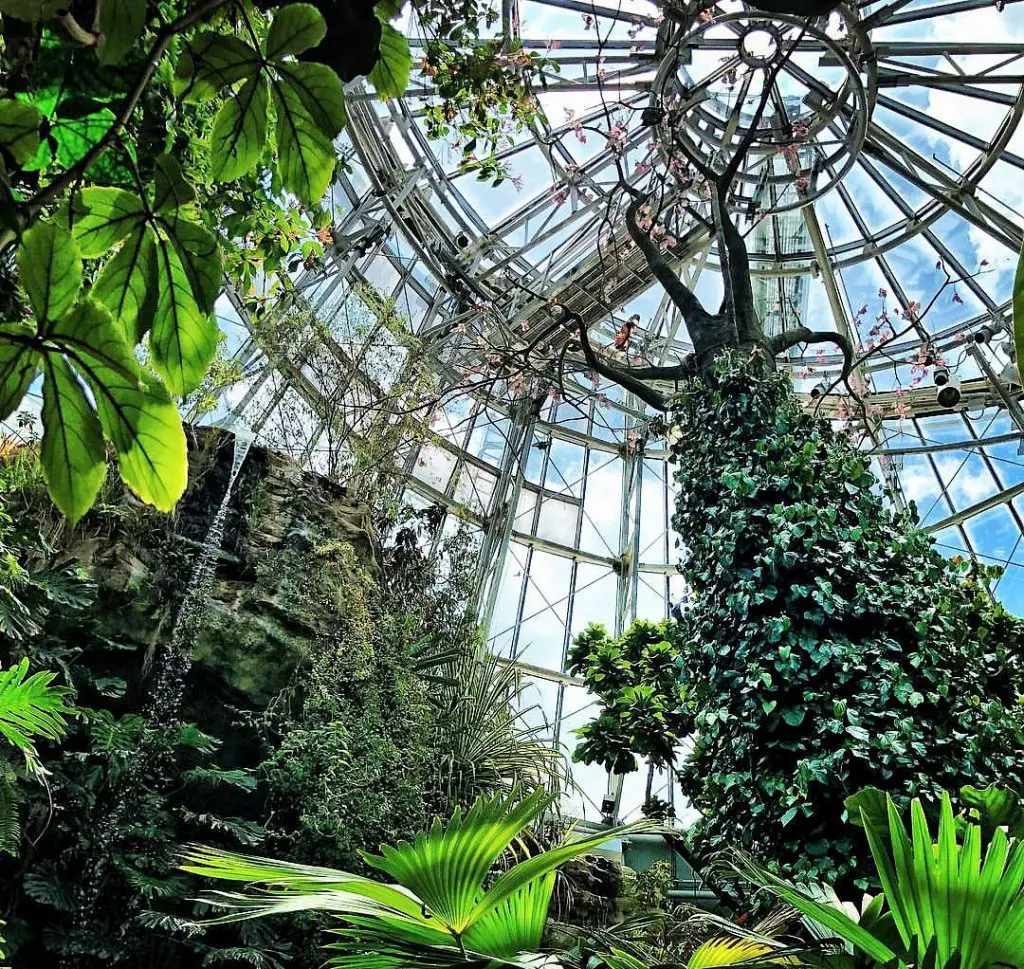
The Cockrell Butterfly Center is a replica tropical rainforest with pollinator plants and a 50-foot waterfall. You can stroll down winding stone steps, through a little trail, and toward the spot where the waterfall ends in a tiny pond to see hundreds of live butterflies flying all around you.
Once you reach the bottom, you can take a short path that passes through all the flowers and vegetation.
You may view honeybees via glass in an enclosed beehive on the walk, and you’ll undoubtedly see and feel butterflies fluttering around you amid the vegetation. Children can try to locate every location where butterflies are sipping from bowls of delicious nectar that have been laid out for them.
As you leave the habitat section, you’ll be walking into the Brown Hall of Entomology, where you can play interactive games, view preserved specimens of some of the biggest and weirdest insects in the world, and discover more about the butterfly ecosystem.
Note
The Cockrell Butterfly Center is not covered by the admission fee to the museum. Tickets, which must be purchased separately, are presently priced at $10 for children under 3 and $12 for adults. For information on other discounts, including those for seniors, college students, and other groups, visit the website. Although the exact duration will vary, plan on spending roughly 45 minutes here.
Strollers are not allowed in this section, it’s advisable to bring a carrier that you can wear and carry your baby as you explore.
2. Morian Hall of Paleontology

This section has More than 450 fossils and fossil replicas, giving visitors a clear view of the extraordinary 3.5 billion-year history of life on Earth. This exhibit hall will put you in the closest view of the monsters that once ruled our world, from the humble trilobite to the powerful Tyrannosaurus Rex. The 30,000-square-foot hall, which opened in the summer of 2012 and includes more exhibit space and classrooms, is the largest expansion in the museum’s history.
The HMNS’s dinosaur exhibits, in contrast to those at other museums, are staged to represent dinosaurs in motion!
Dr. Robert Bakker, the curator of the exhibitions, has changed our perception of dinosaurs as slow animals thanks to his work!
3. The Burke Baker Planetarium
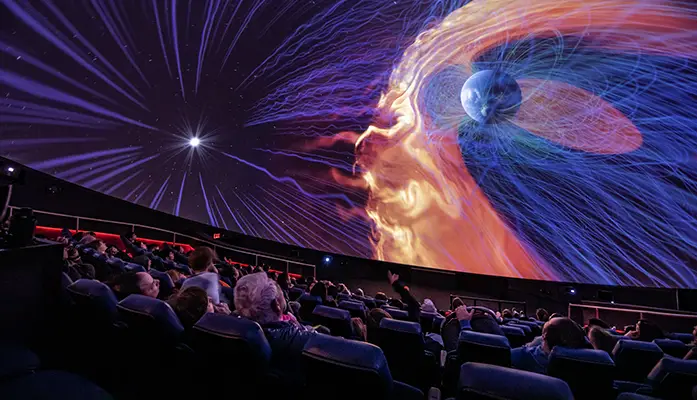
The Burke Baker Planetarium, one of the top five planetariums in the United States, offers daily programs in its dome theater. Astronauts even receive training there on how to recognize starfields!
Since it was opened in 1964, the Burke Baker Planetarium has welcomed millions of guests, including both school groups and the general public, to see astronomical programs. The most advanced digital planetarium software and projection technology in the world, Digistar 6, is now installed in the recently updated planetarium. The visitors can fly through space, feel the immensity of space, explore planet surfaces, travel through asteroid fields, and witness the newest full dome shows thanks to the Digistar 6 technology.
4. Cabinet of Curiosities
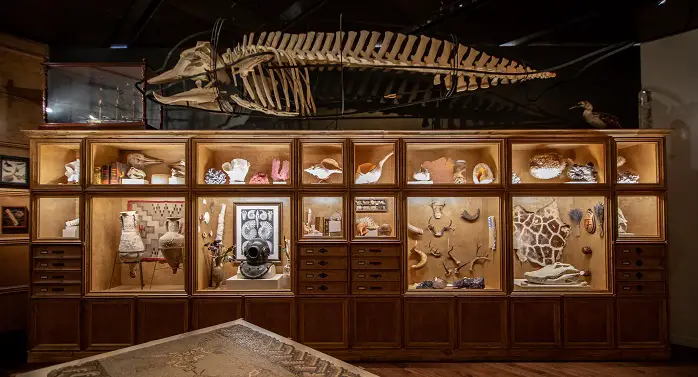
This exhibit of astonishing man-made and natural objects, presented in cabinets with numerous drawers, is full of “treasures” that showcase humanity’s insatiable curiosity and urge to accumulate things. The Cabinet of Curiosities is a distinctive, interactive setting for seated dinners and cocktail parties where guests may explore numerous curios and amazing things up close and in person. Behind plexiglass in a drawer that you can open up is a collection of lovely seashells. Open another to discover eggs from various bird species. Look up to find fascinating masks and maps covering the walls and ceiling in every available space. This charming, wood-paneled room is full of oddities of all types. It’s a fantastic display for kids who are curious because they can open cupboards and explore.
5. Frensley/Graham Hall of African Wildlife
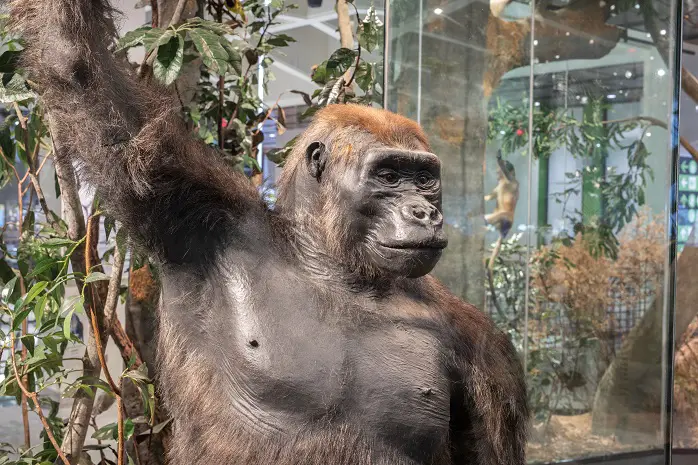
The Graham Family Presentation of Ecology and Conservation Biomes/Evelyn & Herbert Frensley Hall of African Wildlife honors the richness of African wildlife.
Discover seven diverse biomes, each of which focuses on a different aspect of African wildlife ecology and conservation. Realistic images of animals and their environments are depicted on more than 120 specimens, which represent more than 70 species. Numerous endangered species, such as the Giant Forest Hog and Lowland Gorilla, are represented by stuffed animals in the exact replicas of their natural environments.
6. Farish Hall of Texas Wildlife
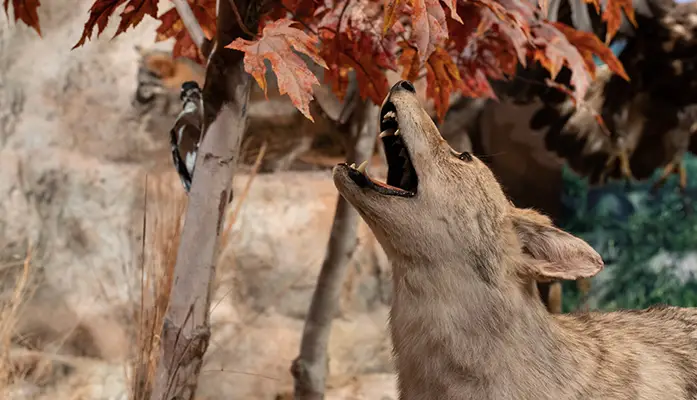
After leaving the Hall of African Wildlife you head to Farish Hall of Texas Wildlife where they showcase the remarkably diverse biomes of Lone Star State: Piney Woods, Oak Motte, Coastal Prairie and Wetland South Texas Dry Forest, Guadalupe Mountains, and High Plains. Approximately 250 species are represented by more than 425 specimens, which represent native wildlife before the widespread human invasion. There is a focus on rare, endangered, and extinct species, with more than 50 species being categorized as threatened in some way. Many species that have survived near extinction and now have stable populations are celebrated.
A brochure with a list of all the species you might see in the dioramas is located at the entryway of the exhibits.
7. Hall of Ancient Egypt
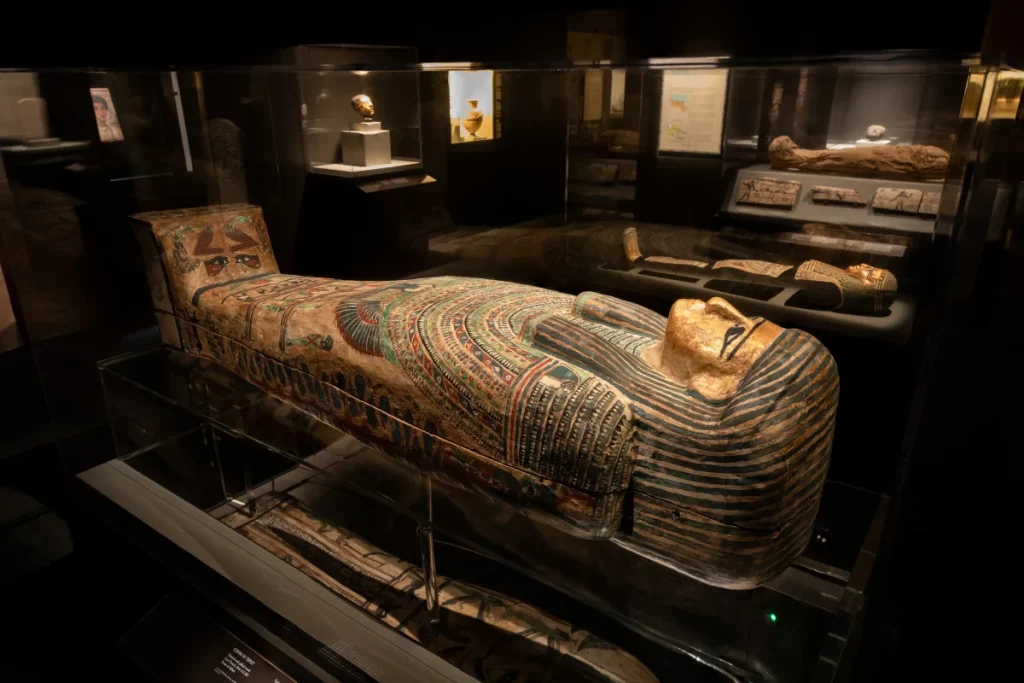
The Hall of Ancient Egypt, which is more than 10,000 square feet in size, offers an insight into ancient Egyptian civilization, beginning with the crucial role that the Nile River and other elements of daily life played. Jewelry and other vanity items, crafts, tools, and weaponry are only a few examples of artifacts that reveal the style and sophistication of ancient Egyptian society.
The focus of ancient Egyptians as they sought the hereafter was death and religion, symbolized by amulets, statues, animal mummies, canopic jars, and other funerary objects. Mummies that have been preserved from the Old Kingdom (2500 BC) to the Roman era ( 200 AD) are displayed in the gallery’s last room along with painted coffins and sarcophagi.
8. Wiess Energy Hall
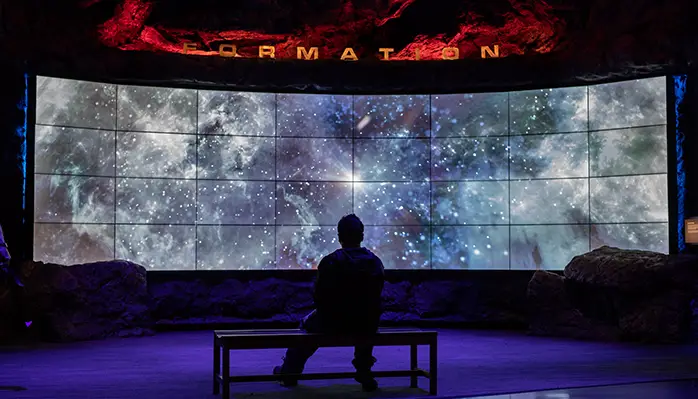
With the help of virtual reality, holographic video, and some fantastic computer graphics, this high-tech, interactive display will teach you all you need to know about energy, particularly the oil and gas industry.
Visitors will discover a variety of exhibits inside, including Energy City, the Unconventional Hydrocarbon Revolution, the Eagle Ford Shale Experience, Energy Jukebox, and more.
9. Welch Hall of Chemistry
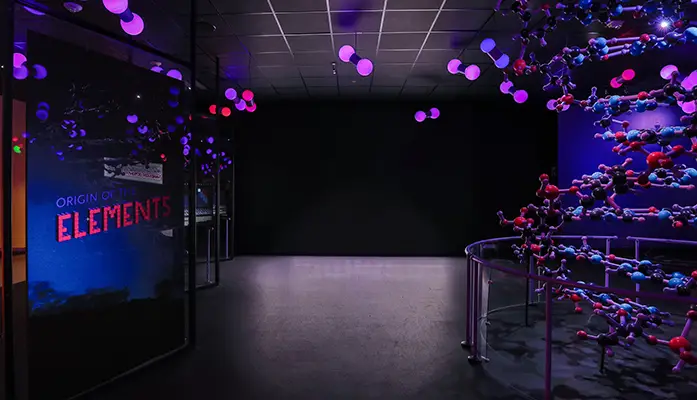
The wall-sized periodic table with actual samples of each element can be found at the Hall of Chemistry. Plan your stop on the lower level to coincide with when scientists are conducting experiments nearby in the Conoco Phillips “Hands-On” Demonstration Lab.
Here, you can discover interesting details about the weights of various elements, various states of matter, polymers, and more.
10. Cullen Hall of Gems and Minerals

This vault is home to over 450 natural specimens and rare gemstones, allowing visitors to view both the exquisite, naturally occurring crystallization and the custom-made handcrafted jewels created by skilled jewelry makers.
11. Strake Hall of Malacology
This vault is home to over 450 natural specimens and rare gemstones, allowing visitors to view both the exquisite, naturally occurring crystallization and the custom-made handcrafted jewels created by skilled jewelry makers.
The study of molluscs, or invertebrate organisms with supple, unsegmented bodies—many of which live inside shells is known as malacology. More than 100,000 species of this interesting and diverse collection of creatures exist, ranging in size from tiny snails that we hardly notice to enormous squids that are more than 60 feet long. These organisms are displayed at the Strake Hall of Malacology with models, fossils, dioramas, live specimens, and hundreds of extraordinary and rare shells.
12.Alfred C. Glassell, Jr. Hall

Alfred C. Glassell, Jr., a prominent philanthropist from Houston, was likewise passionate about huge kinds of game fish, not just for sport but also for study and conservation. This display showcases Tumbesian fish species, notably the 1,560-pound black marlin that Glassell caught in 1953, setting a world record. The 1958 Spencer Tracy movie The Old Man and the Sea used footage from the capture. The exhibition features more than 40 game fish specimens from more than a dozen different species that were discovered off the coast of Cabo Blanco, Peru, where Glassell caught the big marlin.
13. John P. McGovern Hall of The Americas
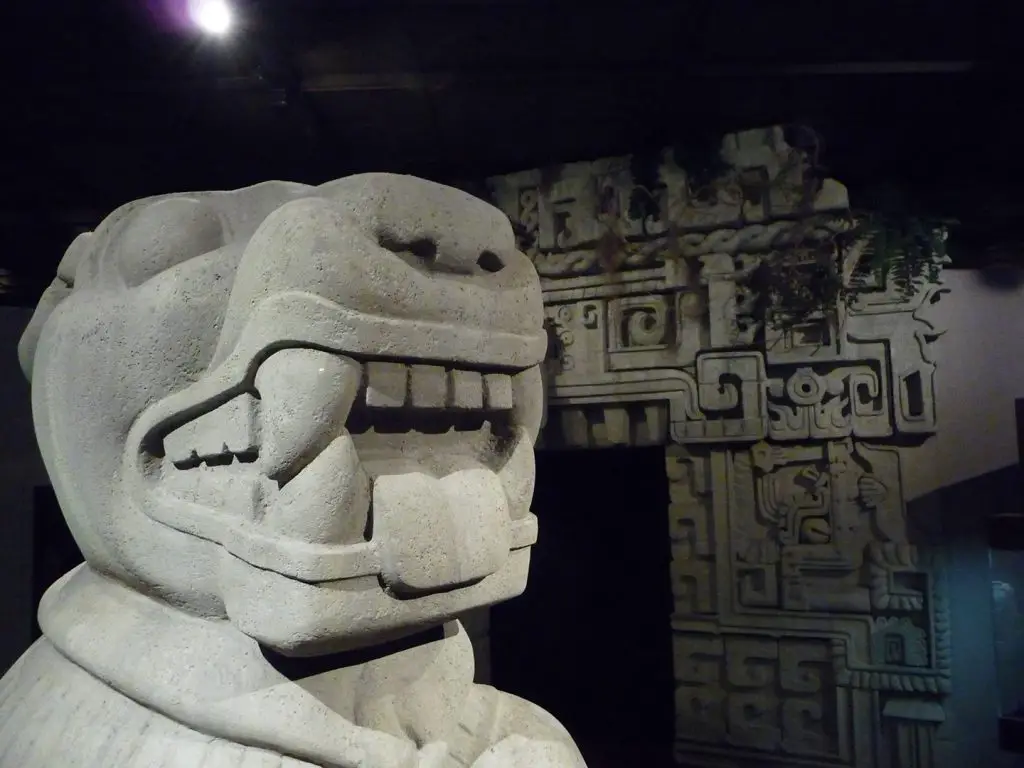
The John P. McGovern Hall of the Americas honors both the past and present great achievements and astonishing diversity of the Indigenous peoples of the region we refer to as the Americas.
An inuksuk, an Inuit stone marker used to denote the direction of a significant location, marks the center of the exhibition in both a physical and philosophical sense. This display serves as a reminder that Indigenous peoples have lived in the Americas ever since the beginning of time.
14. Foucault Pendulum
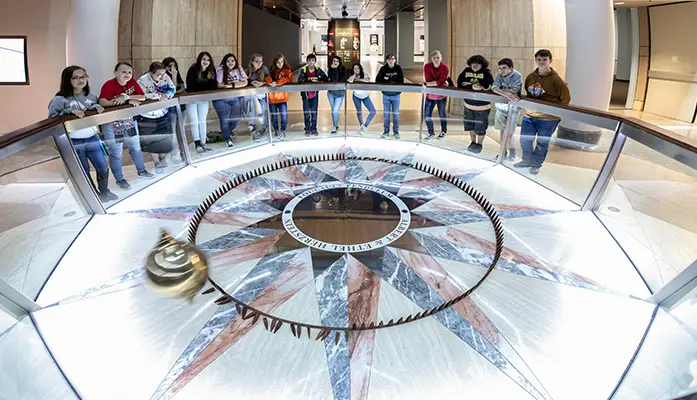
The Foucault Pendulum, named after the French physicist Jean Bernard Leon Foucault who created it, was first displayed in 1851 at the World’s Fair in Paris and serves as a visual representation of the Earth’s rotation. The pendulum seems to swing differently throughout the day. Actually, as the pendulum swings, the Earth is rotating beneath it. The pendulum will precess through 180° or halfway around each day at Houston’s latitude (30° N). It will remove all of the pins during this time. The length of the pendulum affects how long it takes to swing back and forth. The pendulum has a period of slightly over 7 seconds and swings from a cable that is over 60 feet long.
The magnet that surrounds the cable at the top of the pendulum provides the energy required to keep it swinging. The pendulum closes a circuit that turns on the electromagnet as it reaches the middle of its swing. The cable is yanked from its central point by the magnet. While the world below changes, the pendulum continues to swing.
15. Lester & Sue Smith Gem Vault
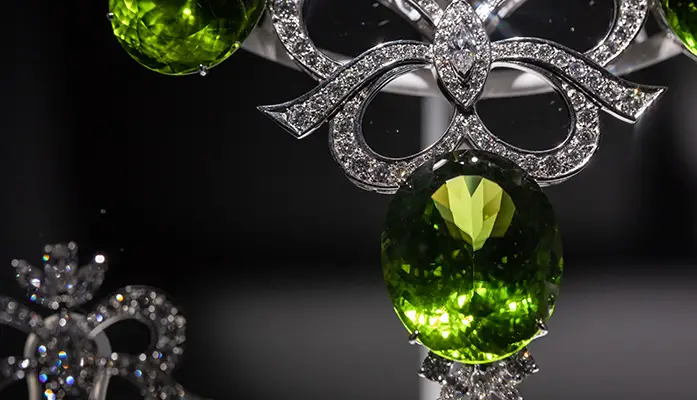
You didn’t expect to discover a tiara in a scientific museum, did you? Beautiful necklaces, rings, and brooches are kept in the gem vault. You can see less rare stones like garnet and aquamarine as well as more popular gems like diamonds and emeralds.
16. Everyday Fabergé

The modern gallery in the Cullen Hall of Gems and Minerals hosts the McFerrin Fabergé Collection. The Artie and Dorothy McFerrin Foundation’s kind support of this gallery is what allows it to exist. The McFerrin Fabergé Collection, the biggest private collection of Fabergé in the world with over 600 pieces, is a treasure trove of items that showcase the brilliance of the Fabergé firm.
17. Dining
Two restaurants are available at the Houston Museum of Natural Science, where you can grab a quick meal to refuel before spending the remainder of the day exploring everything the museum has to offer.
Periodic Table
The HMNS’s newest on-site restaurant is called Periodic Table. It is located just across from the Cockrell Butterfly Center. Salads, sandwiches, pastries, snacks, and other fast food items are available at the restaurant. Periodic Table also offers breakfast.
If you need a boost of energy to get through the day, Periodic Table offers Katz Coffee. You may choose from hot or iced espresso drinks to give you the drive you need to explore the museum.
Elements Grill
Elements Grill is a great option if you’re looking for something more substantial than a sandwich or visiting the museum with children and need a hot meal.
The eatery serves hot food including chicken tenders, hot dogs, hamburgers, and french fries that are tasty for both kids and adults.
Vegetarian dishes are available at Periodic Table and the Elements Grill.
18. Stop at the Museum Gift Shop and Get Something To Remember Your Tour
Visit the gift shop before you leave if you want to take something home as a memento of your visit to the Museum of Natural Science in Houston, Texas, or if you’re seeking presents for loved ones.
The HMNS gift shop is stocked with amusing scientific-themed artifacts, like grow-your-own mineral kits, science experiments, and products for your at-home art facility.
19. Visit Nearby Attractions Near HMNS
Utilize Houston CityPASS® tickets to save 49% while visiting additional top attractions, such as the Space Center, the Museum of Fine Arts, and the Children’s Museum Houston.
20. Nearby Accommodations
As stated before, you can spend a whole weekend exploring the HMNS and the nearby attraction sites. Therefore, you need a cozy place to spend your night after a busy day. Luckily, HMNS is conveniently located near many hotels like Hotel ZaZa Houston Museum District, InterContinental Houston, an IHG Hotel, and Houston Marriott Medical Center/Museum District.
Tips for your visit
- If possible, visit the museum on Mondays just when it opens (9 am) to avoid the crowds.
- With your ticket for the permanent displays, you can actually leave to dine and then return on the same day.
- While the Planetarium, Giant Screen Theater, and Butterfly Center do not permit strollers, they will provide you with a space to keep them.
- Residents in the area should think about getting a family membership, which starts at $115 and would pay for itself in two trips for a family of four.
FAQS
When is the best time to go to HMNS?
The museum is open from 9:00 a.m. to 5:00 p.m. seven days a week. For the permanent collection, 4:30 p.m. is the closing time for entries. The last admittance is at 4:00 for the planetarium, giant-screen theater, and special exhibits. Weekends are typically busier than weekdays, and those who arrive early will find fewer people there than those who arrive in the middle of the day or early in the afternoon.
Suppose I love it so much I want to throw a party there. How do I do that?
A dinner with dinosaurs or cocktails with stunning gems as a backdrop is among the most spectacular things you can do. Weddings and other events are frequently held at the HMNS. Learn more here.
I’ve seen something about a museum in Sugar Land. What’s that about?
HMNS in Sugar Land is an independent fully science museum with its exhibits, summer camps, and events. It’s open from 10:00 a.m. to 5:00 p.m. on Thursday through Sunday, with extended hours during school break periods. Adult tickets cost $13 while child tickets cost $10.


